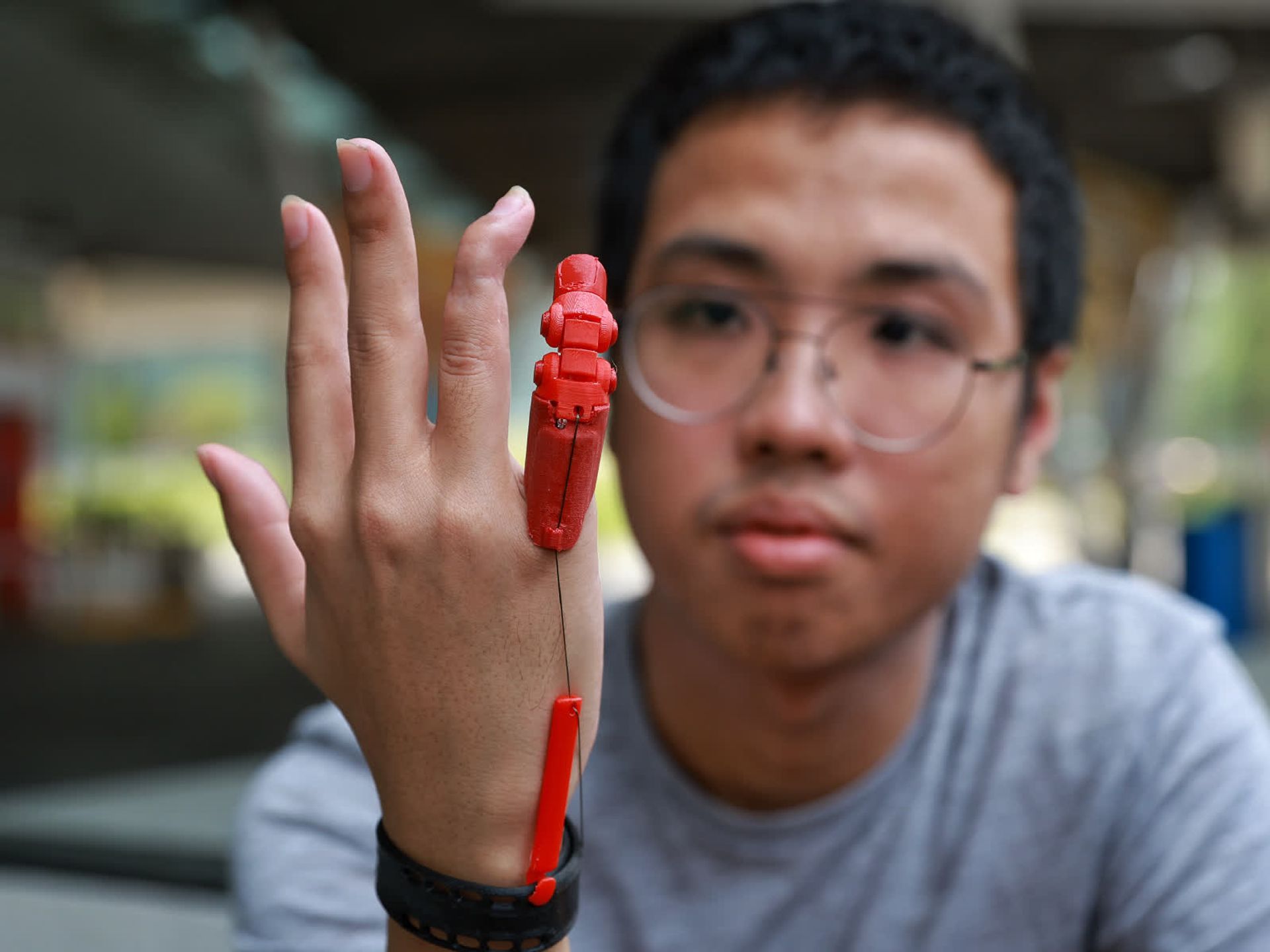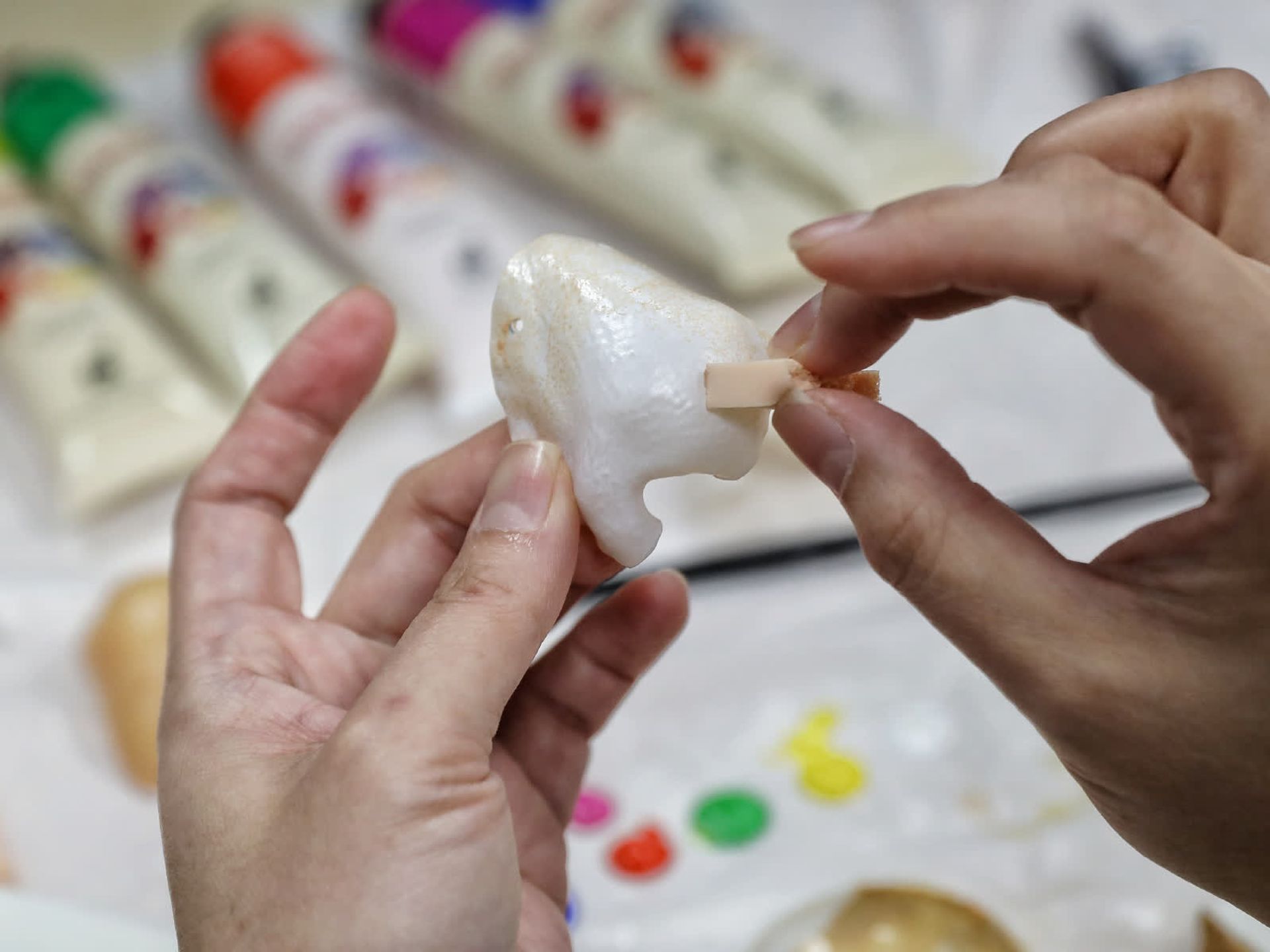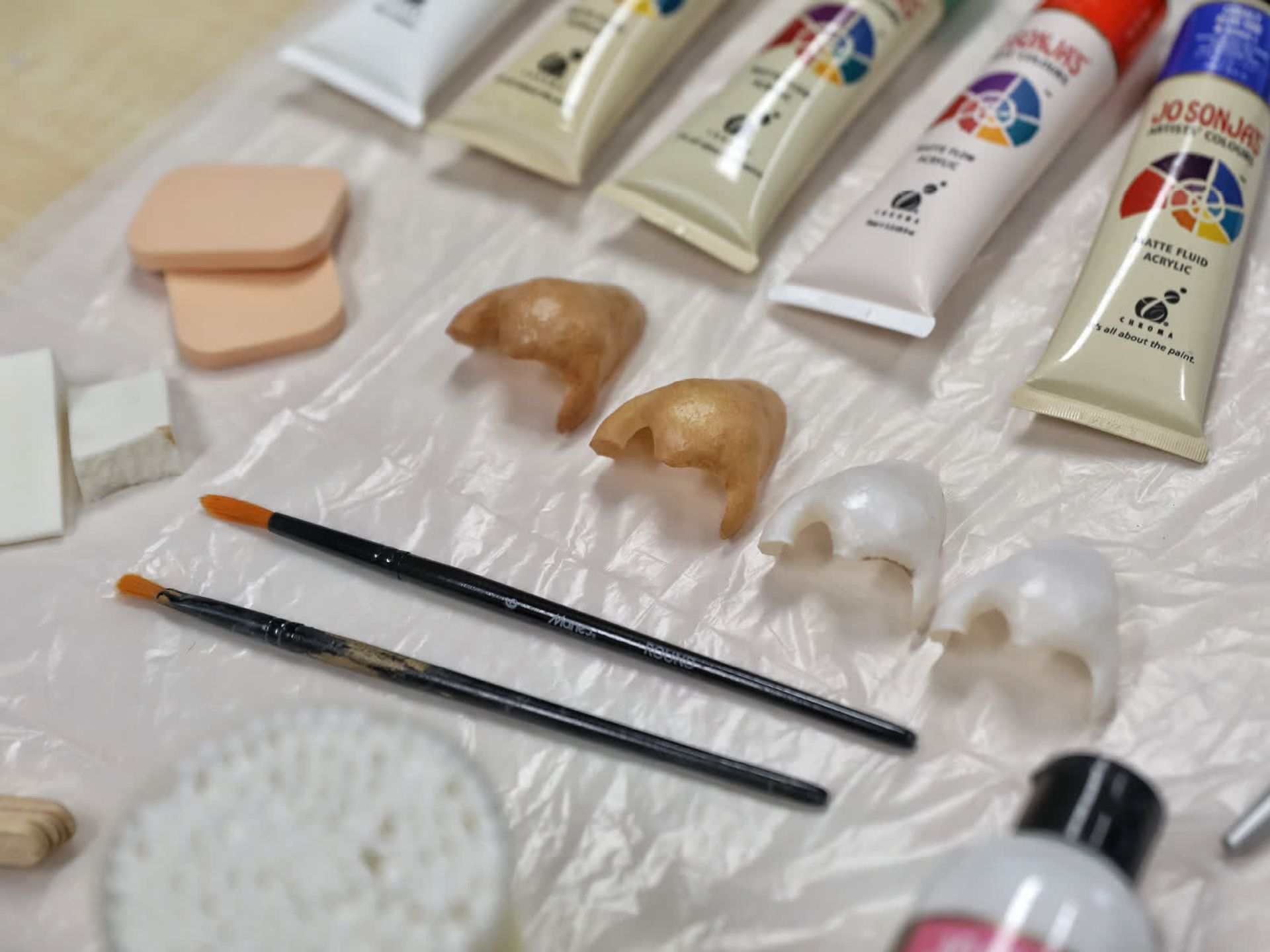Mr Lian’s was the first prosthetic nose created by a team of doctors and 3D-printing engineers that has been pushing medical boundaries at TTSH.
Leading the team behind this ground-breaking project was Dr Michael Yam, an orthopaedic surgeon and head of TTSH’s Medical 3D Printing Centre that officially opened in November 2022.
The centre prints models of patients’ organs from medical scans to help doctors better explain conditions and treatments to patients. Medairum engineers work at the centre on 3D printing projects. Medairum – a medical 3D printing company – was one of several companies that were licensed to manufacture 3D printed Covid-19 swabs in the early stages.
The centre’s pilot project was to 3D print a prosthetic for Mr Lian. The prosthesis was designed to look almost identical to Mr Lian’s original nose.
“When he had his final fitting, I felt so satisfied because it felt like I was returning something to him,” said Dr Yam, who has been experimenting with 3D printing technology since 2019.
I felt satisfied, because I felt as if I had returned something to him.
“It was very fulfilling to see Mr Lian happy wearing the nose and being comfortable not wearing a mask,” said Medairum general manager Nirodha Ariyaratne. “Although there were challenges in getting the fitting right, once that finally came into place it was very fulfilling for me.”
The success of this pilot project paved the way for other custom-made prosthetic projects for TTSH’s 3D printing centre. TTSH has since worked on other major projects, including a functional hand prosthesis and a cranial splint.
Artificial body parts or prostheses can help patients to regain function and confidence.


Russel Ko is a 21-year old man who lost a finger in a car accident in 2022. The prosthesis restored his ability to perform daily activities and allowed him to “feel normal” again.
The team has also developed cranial helmets for patients awaiting skull-reconstructive surgery, after a portion of the skull was removed due to a stroke or an accident. They are worn by these patients as a protective device.
The designs of 3D-printed prosthetics are tweaked based on each patient’s requirements.
Mr Lian’s nose prosthesis required more than seven iterations. Dr Yam says that while the computer model of the nose may fit perfectly, it may not be comfortable in real-life. The team made sure to test the nose to see if it was comfortable to wear for extended periods and to see how it sat when Mr Lian moved around or performed various activities.
The team tried out different materials. They were looking for biocompatible materials that wouldn’t cause skin allergies, or other toxic effects. The material also had to be certified by regulatory bodies like the United States’ Food and Drug Administration and the Health Sciences Authority in Singapore. They decided to use a surgical resin that is usually used for dental implants.
The final product was made from surgical guide resin and weighed 12g. Here’s how it was printed.
Stereolithography is the 3D printing technique that was used. It builds up a layer-by-layer structure using liquid resin, which hardens under UV light. Printing Mr Lian’s prosthetic nose took about an hour.
Then, remove the 3D printed object from the printer. Soak it in isopropyl to remove any excess resin.
The 3D model will then be placed in a curing device, where it will harden under UV light.
It is then ready to be painted after it has been trimmed, sanded and polished.
Next hurdle: Getting the 3D print to match Mr Lian’s skin tone.
For this challenge, the team recruited cosmetic experts – Madam Ho Ee Na and Ms Jessie Goh – from Institute of Technical Education (ITE). Ms Goh is the head of the Beauty and Wellness course at ITE College East and has many years of experience in stage and special effect make-up. She was unsure if she could paint a prosthesis, as it was a new experience.
“The kind of work we do is meant to last only a few hours or a day, but this nose is for daily use,” said Ms Goh.
The duo worked with Mr Lian on the skin tones five times, using layers of skin safe acrylic paint to create a light beige that matched his facial features.
“It’s very different,” said Madam Ho. “When we do make-up, we blend colour on a person’s skin. The paint sits very differently on the prosthetic nose.”


They were rewarded for their efforts. ITE College East is now a partner of TTSH’s 3D printing centre, to provide cosmetic services for its prostheses.
Students from the college’s beauty and wellness program can now work on 3D-printed prostheses. “We want to tell them that as a make-up artist and with the skills that they learn, they can actually help people to gain back their confidence,” said Ms Goh.
The long-term goal is to make medical 3D printers mainstream in Singapore.
Dr Yam said that 3D printing could be used to solve many medical issues. “We want to make 3D printing more accessible to patients.”
Next, the centre will look at a pricing structure to make these prostheses accessible to those patients who need them. The centre will be able to sustain itself in the future. It is important to consider the cost of a centre’s services and whether they can be subsided, like orthotics or prosthetics.
Despite TTSH’s success in Mr Lian’s case, Singapore still has a long way to go in medical 3D printing. TTSH is yet to explore 3D prints with higher fidelity, like implantables or customised plates.
“We want to become the standard of care and we are trying to emulate what Mayo Clinic is doing in the US,” Dr Yam said, referring to the non-profit American academic medical centre’s forays into 3D printing. “One day, we would like to be able to replicate its 3D printed point-of-care implantables capabilities as well.”
Medairum’s Mr Nirodha added: “You also need the regulatory bodies to come in and really set down the landscape for this technology adoption. There must be all kinds of regulations and certifications in place to make this a safe tech to use on patients. It’s currently happening.”